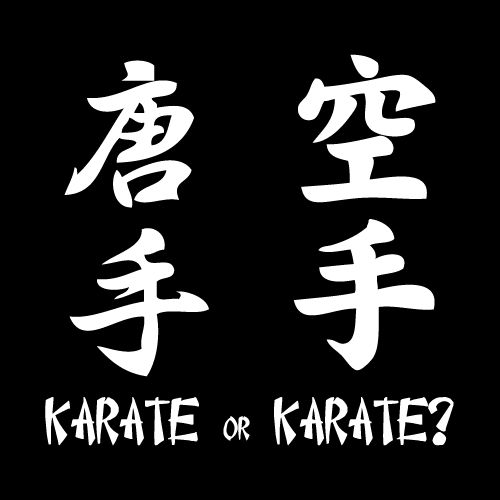A short note on the meaning of the word “Karate”.
There’s this pervading thought that the word Karate being a homonym… a word that’s spelled the same but means two different things.
Karate is spelled with two letters, Kara (空 or 唐) and Te (手).
 The latter character, Te (手), remains a constant in both spellings of the word Kara-te and uses the character for “hand” (te in Japanese).
The latter character, Te (手), remains a constant in both spellings of the word Kara-te and uses the character for “hand” (te in Japanese).
The character for “Te” or “Ti / Di” (in Uchinaguchi – Okinawan dialect), which is written like this, 手, actually was used in reference to the indigenous martial arts of Okinawa.
The character for Kara was originally spelled using the character for “T’ang” (or Tou), 唐, which in this context meant its origins were Chinese (referencing the T’ang Dyansty of China).
This character, (唐), can be read two ways: Kara (から) or Tou (トウ) in Japanese.
So, in Okinawa, the word Karate was typically pronounced Tode (or Toudi) – 唐手. In this context, Toudi meant that the martial art was a blend of Chinese and Okinawan martial arts. Only when Karate became “modernized” just prior to World War 2 did the new spelling appear, which is the character for empty, which is also pronounced “Kara”. So it became Karate – “Empty Hands” (空手).
As a side note, you will typically see Kempo school with a Hawaiian origin (including Kajukenbo and American Kenpo) use the latter spelling when writing “Karate” (唐手)… but often use it as a homonym (that it means “empty hands”).
So you could say that the original meaning of Kempo Karate (拳法唐手) simply means “Chinese and Okinawan method of Boxing”.
